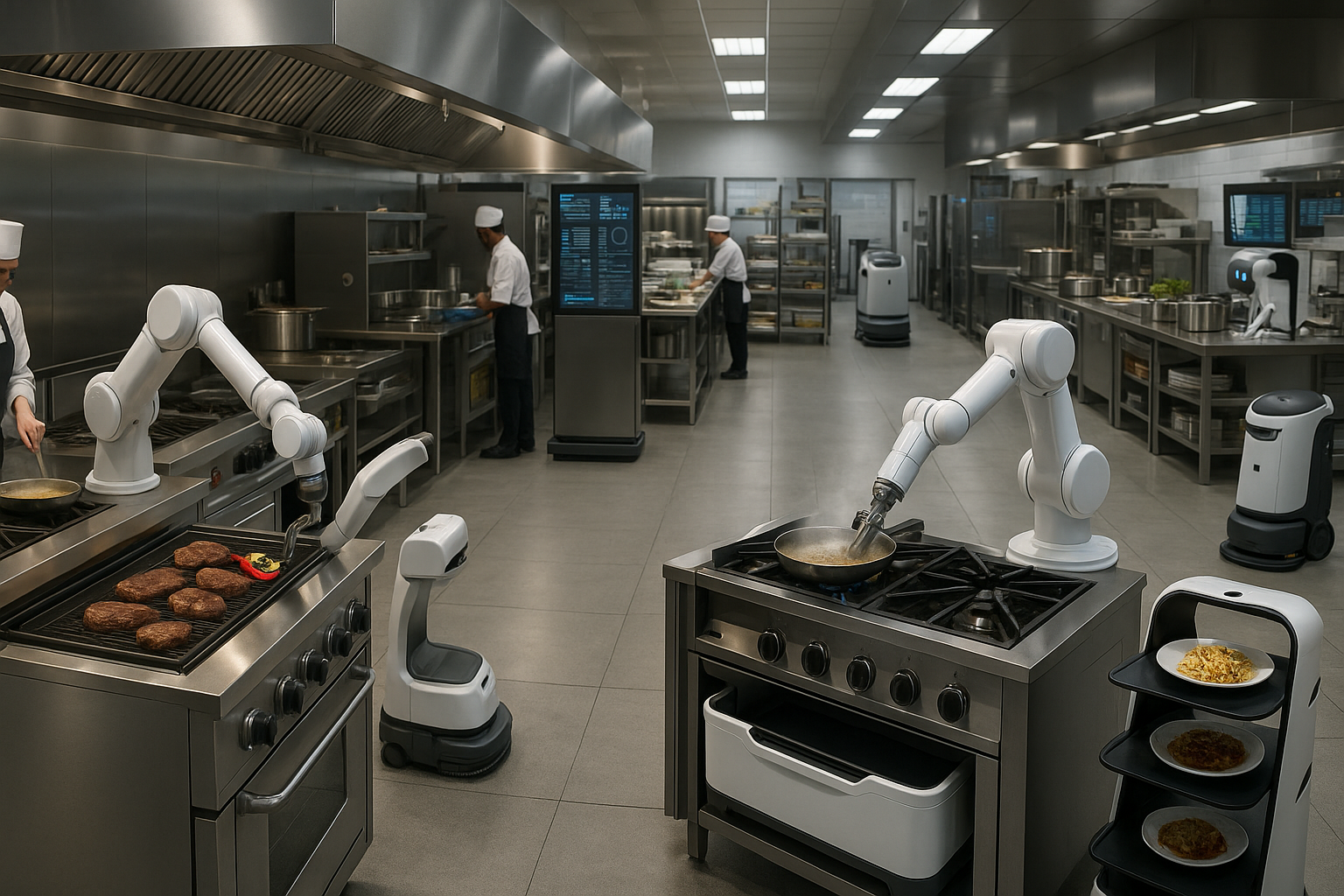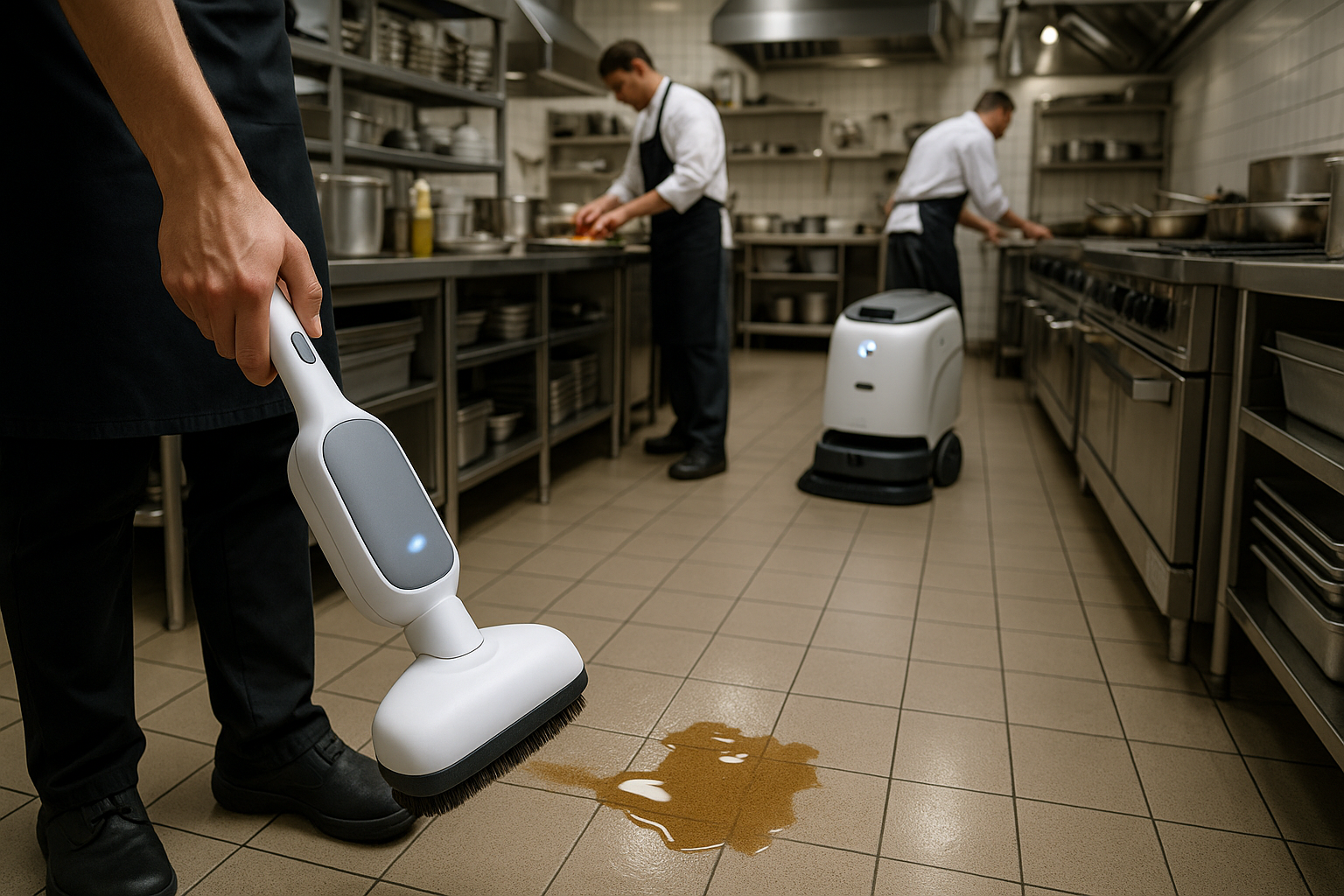Exploring commercial restaurant automation solutions for large-scale operations.
Jun 28, 2025
-
When you’re feeding thousands of people a day, you don’t need a robot—you need a system.
That’s the reality for high-volume culinary operations like cruise ships, airline kitchens, convention centers, theme park resorts, and large-scale event caterers. These are not typical restaurants. They are food factories with the added expectation of delivering a consistent, pleasant, and personalized guest experience.
In Our Robotics Future, I wrote that the biggest gains from robotics come when automation becomes invisible. That’s exactly what large-scale operators need: technology that works quietly in the background while turning chaos into consistency.
The Scale Problem: 10,000 Meals, One Kitchen
The biggest challenge in commercial foodservice is throughput.
-
An airline prep facility might produce 20,000 meals per day.
-
A cruise ship kitchen can prep and serve 30,000 meals per voyage.
-
A convention hotel may host 4,000 guests for dinner and breakfast, in the same 12-hour window.
When you’re producing at that scale, the margin for human error narrows. A late prep line, a missing server, or a batch inconsistency doesn’t just ruin a dish—it disrupts an entire operation. This is where automation steps in to stabilize and streamline the workflow.
Automation Tools Built for Scale
Let’s break down the robotic solutions that matter most in high-capacity environments:
1. Back-of-House Meal Preparation Robots
These include automated systems for:
-
Chopping, slicing, and dicing
-
Mixing and portioning
-
Precision cooking (grilling, boiling, frying)
-
Plating and sealing
At scale, these systems enable batch precision—which means meals don’t just go out faster, they go out with consistent portioning, presentation, and temperature control.
Example Use Case:
In airline kitchens, robotic portioning arms can fill hundreds of trays per hour, reducing prep time by over 60% while minimizing contamination risk.
2. Food Delivery Robots (Internal Logistics)
In environments like cruise ships and resorts, food needs to travel. Delivery robots can autonomously move trays, carts, and supplies across large facilities—safely and without constant supervision.
-
Saves labor on food running
-
Maintains temperature with enclosed payloads
-
Frees up staff for higher-touch tasks
3. Cleaning & Sanitization Automation
In large operations, cleaning isn’t once-a-day—it’s ongoing.
-
Autonomous floor scrubbers operate overnight or between shifts
-
Handheld spill management devices like the Pudu SH1 keep prep areas safe and sanitary mid-shift
-
UV sanitizing robots can clean high-touch surfaces without chemicals
Cleanliness isn’t just a matter of hygiene—it’s a matter of operational uptime.
4. Inventory & Prep Monitoring Bots
Sensor-equipped automation tools can:
-
Track inventory movement
-
Alert on restocking needs
-
Flag deviations in prep timing or ingredient quality
With this kind of data, managers can spot inefficiencies before they turn into bottlenecks.
The Real ROI of Automation at Scale
When people ask me if robotics is expensive, I remind them: Humans are more expensive.
Here’s why automation wins in large-scale kitchens
Task Traditional Cost (Daily) Automated Equivalent Savings Food prep (6 staff) $1,080 ($30/hr) $180 $900+ Internal food runner $200 $30/day robot $170 Cleaning crew (2) $300 $40 robot/night $260 In total, it’s not uncommon for a robotic system to pay for itself in less than 6 months, especially when factoring in reduced turnover, fewer sick days, and less downtime.
Why RobotLAB Is the Right Partner
This is where manufacturers often fall short. They want to sell their product. At RobotLAB, we focus on the outcome, not the brand. That’s why we work across multiple platforms, customizing solutions for:
-
Your kitchen footprint
-
Your staff capacity
-
Your meal output goals
-
Your unique logistical flow
We’ve deployed automation across airports, hospitals, hotels, schools, and cruise ships. Each has different constraints. But the need for reliability, repeatability, and efficiency? That’s universal.
Final Thoughts: Build a Kitchen That Never Sleeps
At the industrial scale, automation is not just helpful—it’s the only way to stay competitive.
If your kitchen is feeding thousands, you don’t need to automate one task—you need to engineer a symphony of systems that work in concert. That’s where RobotLAB comes in.
Let’s talk about how we can build a kitchen that scales with your ambition.
-
📞 Scroll down to speak with a specialist in one of our many locations, or Contact RobotLAB global specialists for a custom ROI analysis and explore how delivery robots can drive operational excellence and brand differentiation for your property.









 Too much to read? Don't have time?
Too much to read? Don't have time? 

.webp?width=124&height=124&name=image%20(1).webp)
.webp?width=169&height=87&name=image%20(2).webp)













